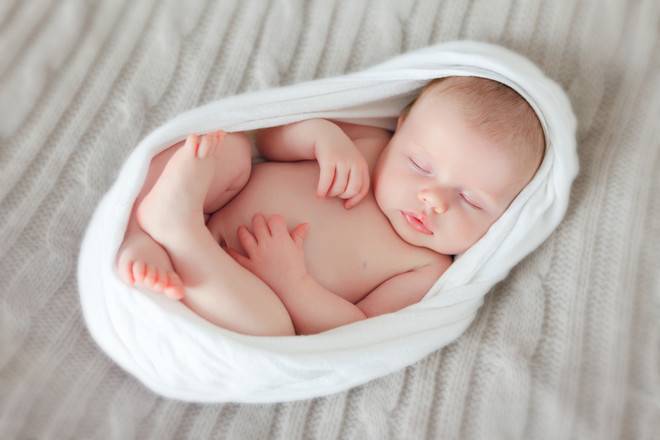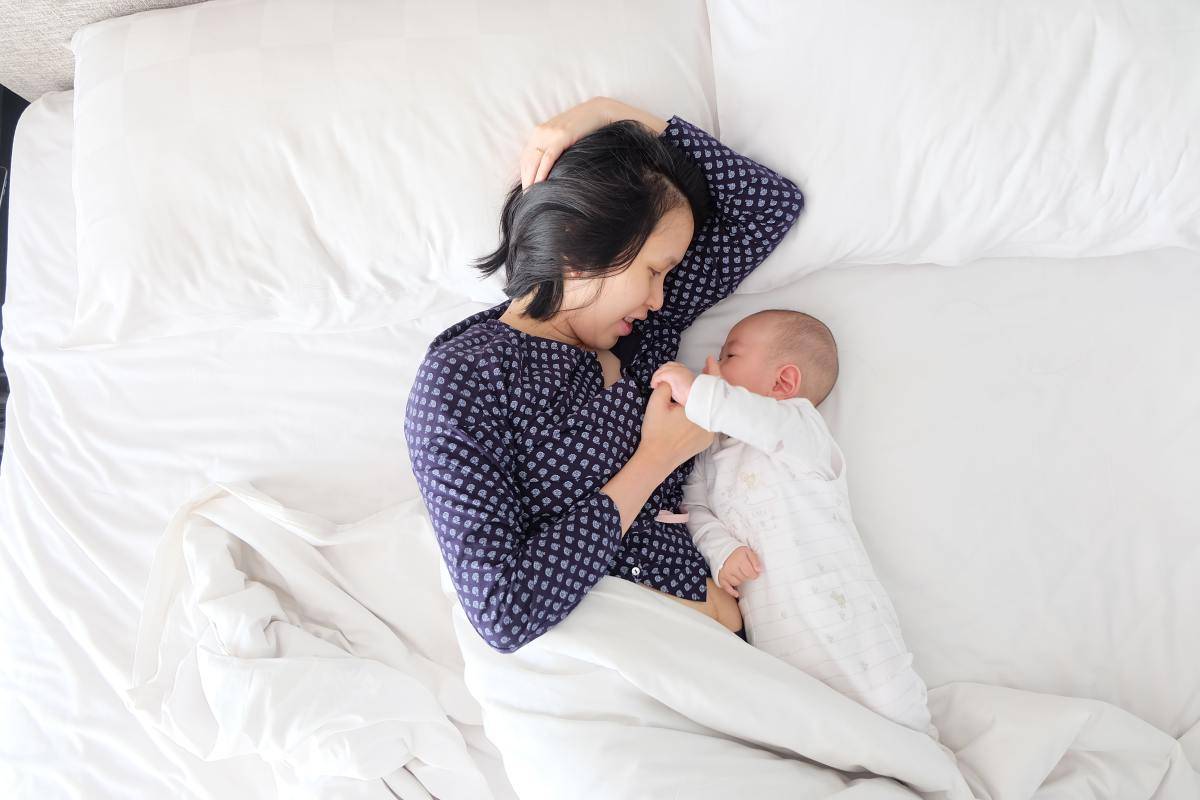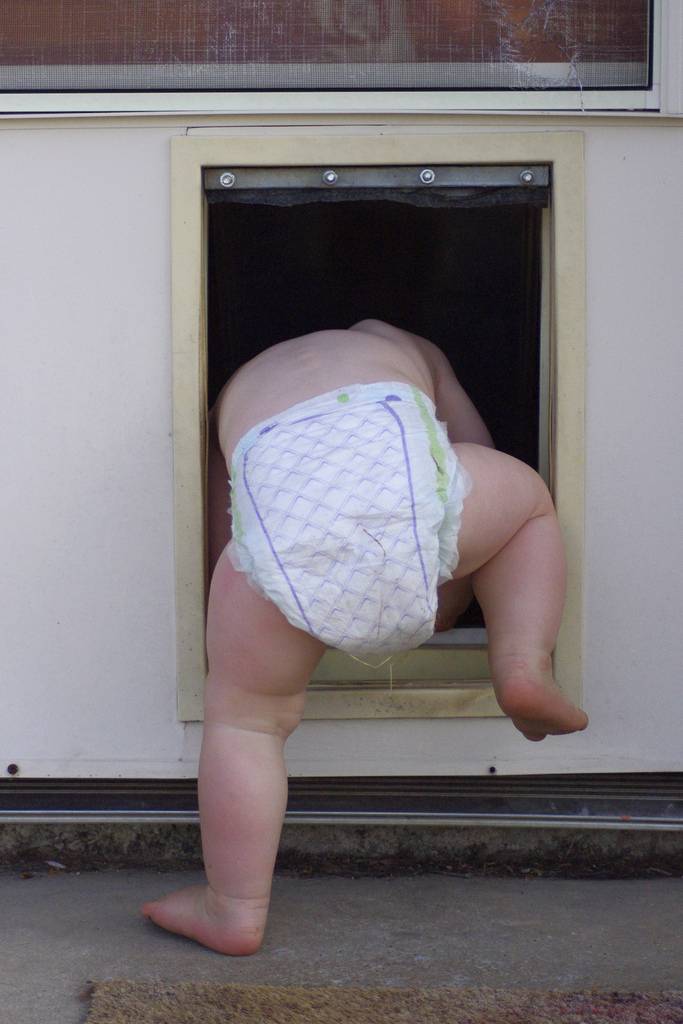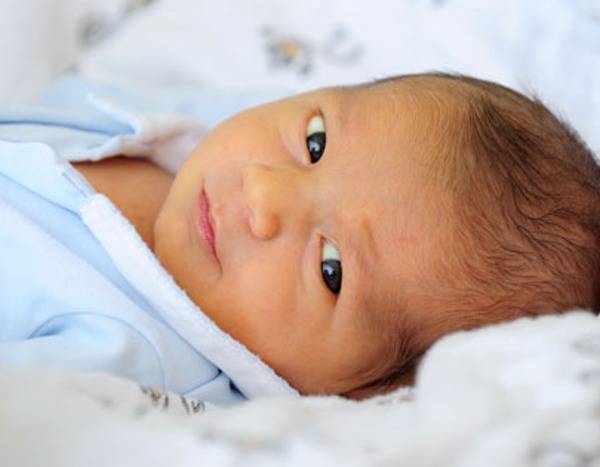Having a newborn is an exciting but exhausting time. As a new mom, you want to ensure you are doing everything possible to keep your precious little one safe and healthy. One of the most important things is creating a safe sleep environment for your baby. The [American Academy of Pediatrics](https://www.aap.org/) (AAP) has recently updated their recommendations on safe infant sleep practices to help reduce the risk of sleep-related deaths. I’ve summarized the key points from the AAP policy statement into this guide for new moms like you.

Back to Sleep is Best
The #1 recommendation from the AAP is placing babies on their back for all sleep times – naps and at night. This is called the “back to sleep” position. According to a [meta-analysis](https://www.ncbi.nlm.nih.gov/pubmed/12540508) by Li et al., back sleeping significantly reduces the risk of sudden infant death syndrome (SIDS) and other sleep-related causes of infant death compared to tummy or side sleeping.
I know you’ve probably heard a lot about the importance of back sleeping already. But why is this simple tip so crucial?
Why Back Sleeping Matters
Studies by [Chiodini et al.](https://pubmed.ncbi.nlm.nih.gov/8372900/) and [Patel et al.](https://pubmed.ncbi.nlm.nih.gov/11707557/) found that when babies sleep on their backs, their airway remains open. Sleeping on the tummy or side increases the chance of the infant re-breathing exhaled air, which could lead to oxygen deprivation.
Even though your baby will likely sleep longer on their tummy, don’t be tempted by this! Research by Malloy et al. shows back sleeping doesn’t increase the risk of choking or aspiration. Babies have gag reflexes and airway anatomy that protects them.
What if your baby rolls onto their tummy on their own during sleep? The AAP says you can leave babies who roll both ways in whatever sleep position they assume on their own. But be sure to continue placing them on their backs when you first put them down.
Choosing the Right Sleep Surfaces
In addition to back sleeping, it’s vital to provide your baby with a firm, flat sleep surface. Always place your newborn on a safety-approved crib mattress covered by a fitted sheet, as recommended by the [Consumer Product Safety Commission (CPSC)](https://www.cpsc.gov/). Studies by [Kemp et al.](https://pubmed.ncbi.nlm.nih.gov/8019626/) show that loose bedding, comforters, stuffed animals or other soft objects in the crib can increase the risk of suffocation and SIDS.
Safe Sleep Surface Tips
– Avoid any bedding with inclines or angles. According to Mannen et al., the surface should be completely flat and firm, which reduces the chance of your baby slipping down into a risky position.
– Research by [Kemp et al.](https://pubmed.ncbi.nlm.nih.gov/8019626/) indicates that mattresses made from memory foam, which conform to baby’s shape, are not considered safe.
– Stick with a firm crib mattress that doesn’t indent when baby lies on it, as suggested by the CPSC guidelines.
You can dress your newborn warmly for sleep with footed pajamas or sleep sacks instead of blankets which could end up covering the head or face. Don’t worry if baby feels cool to the touch – studies like [Ponsonby et al.](https://www.ncbi.nlm.nih.gov/pubmed/1599759) show that overheating is actually a greater risk than getting cold.

The Benefits of Newborn Room Sharing
According to studies by [Hauck et al.](https://jamanetwork.com/journals/jama/fullarticle/195428), Tappin et al. and [McGarvey et al.](https://adc.bmj.com/content/88/12/1058), the AAP recommends room sharing, meaning your baby sleeps in your room but on a separate sleep surface, ideally for at least the first 6 months. Having your newborn sleep in a bassinet or crib close to your bed makes nighttime breastfeeding easier. It also lowers the risk of SIDS by as much as 50% compared to separate rooms.
While bed sharing is common for convenience and facilitating breastfeeding, research reviewed by Carpenter et al. indicates the AAP cannot recommend this practice under any circumstances due to increased SIDS, suffocation and strangulation risks. Room sharing provides closeness to monitor your baby while still using a separate sleep area specifically designed for infants.
Room Sharing Tips
– If you choose to feed your baby in your bed, make sure to stay fully awake, according to [Blair et al.](https://www.ncbi.nlm.nih.gov/pmc/articles/PMC1731626/). As soon as you’re finished, return your little one to their crib or bassinet.
– Falling asleep together unintentionally puts your newborn at greater risk, said Carpenter et al.
More Ways to Reduce Risk
– Offering a pacifier when putting your baby down to sleep is linked to lower SIDS risk, per studies like [Li et al.](https://www.ncbi.nlm.nih.gov/pubmed/16240637). If you’re breastfeeding, wait until you feel like nursing is well established before introducing a pacifier – usually around 3-4 weeks old.
– Avoid smoke and secondhand smoke exposure. According to Zhang et al., don’t allow smoking around your baby.
– Breastfeeding moms should also avoid alcohol, marijuana and illicit drugs as these substances increase SIDS risks, said [O’Leary et al.](https://pediatrics.aappublications.org/content/131/3/e770).
– See your health care provider regularly during pregnancy and make sure your newborn gets all recommended vaccines and well-child checkups. Research by [Getahun et al.](https://pubmed.ncbi.nlm.nih.gov/15106067/) supports this.
– Take precautions not to overbundle or overheat your newborn. Use light breathable fabrics and don’t overdress, as suggested by [Ponsonby et al.](https://www.ncbi.nlm.nih.gov/pubmed/1599759).
– Get supervised tummy time to prevent flat spots and build strength, always placing baby on the back for sleep. Recommendations from van Vlimmeren et al. support this.
Protect Your Little One
Creating a safe sleep environment by following the AAP’s recommendations will give you peace of mind that you are doing everything possible to lower your newborn’s risk of sleep-related infant death. Our experienced pediatricians are available for appointments to discuss these guidelines and address any concerns you may have about your baby’s health and development. We also offer a free weekly newsletter with useful tips for new parents. Subscribe today so you don’t miss out! Wishing you many nights of safe, restful sleep during this new chapter of parenthood.


